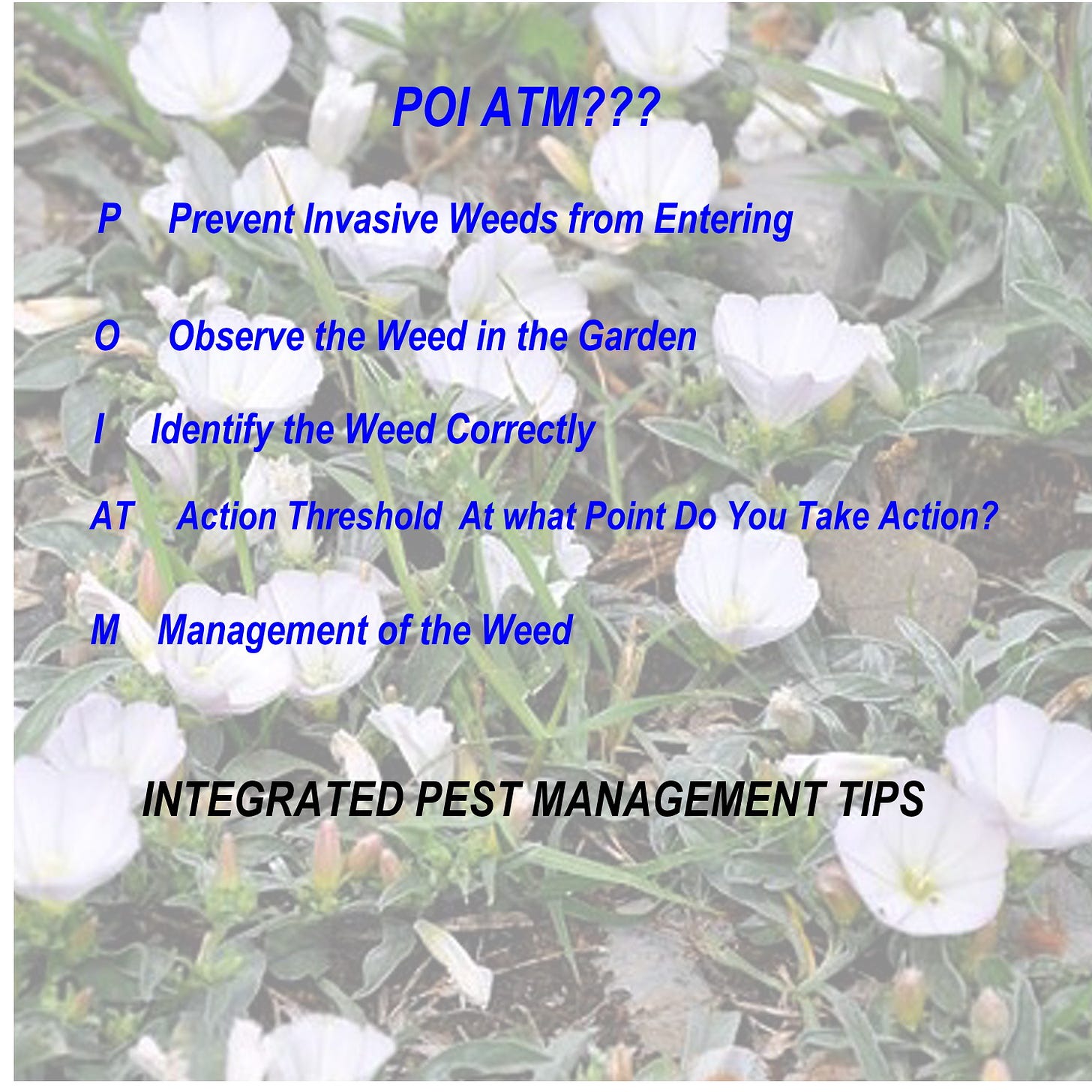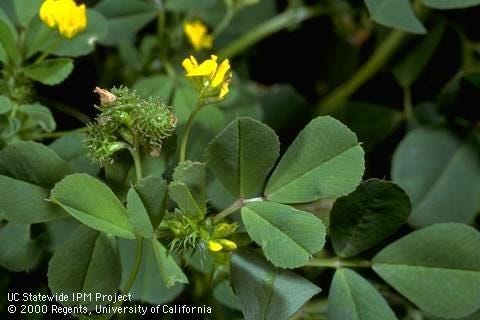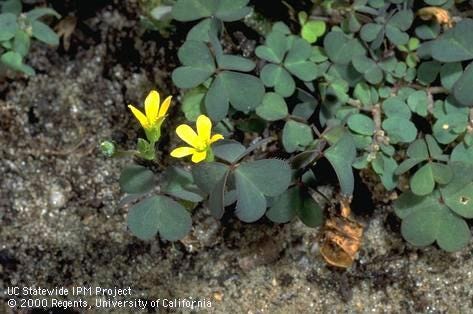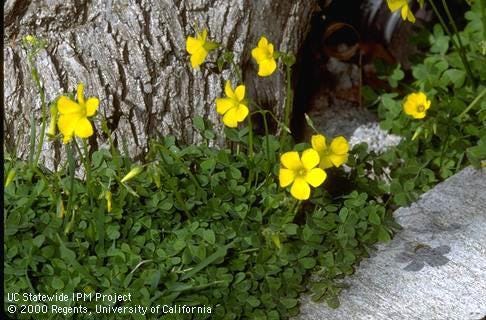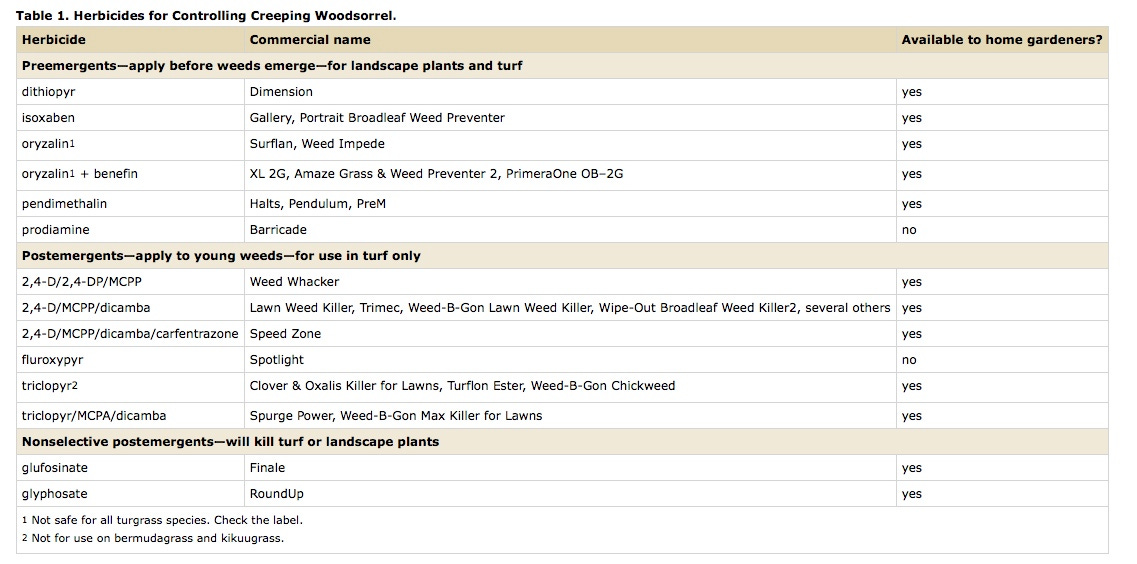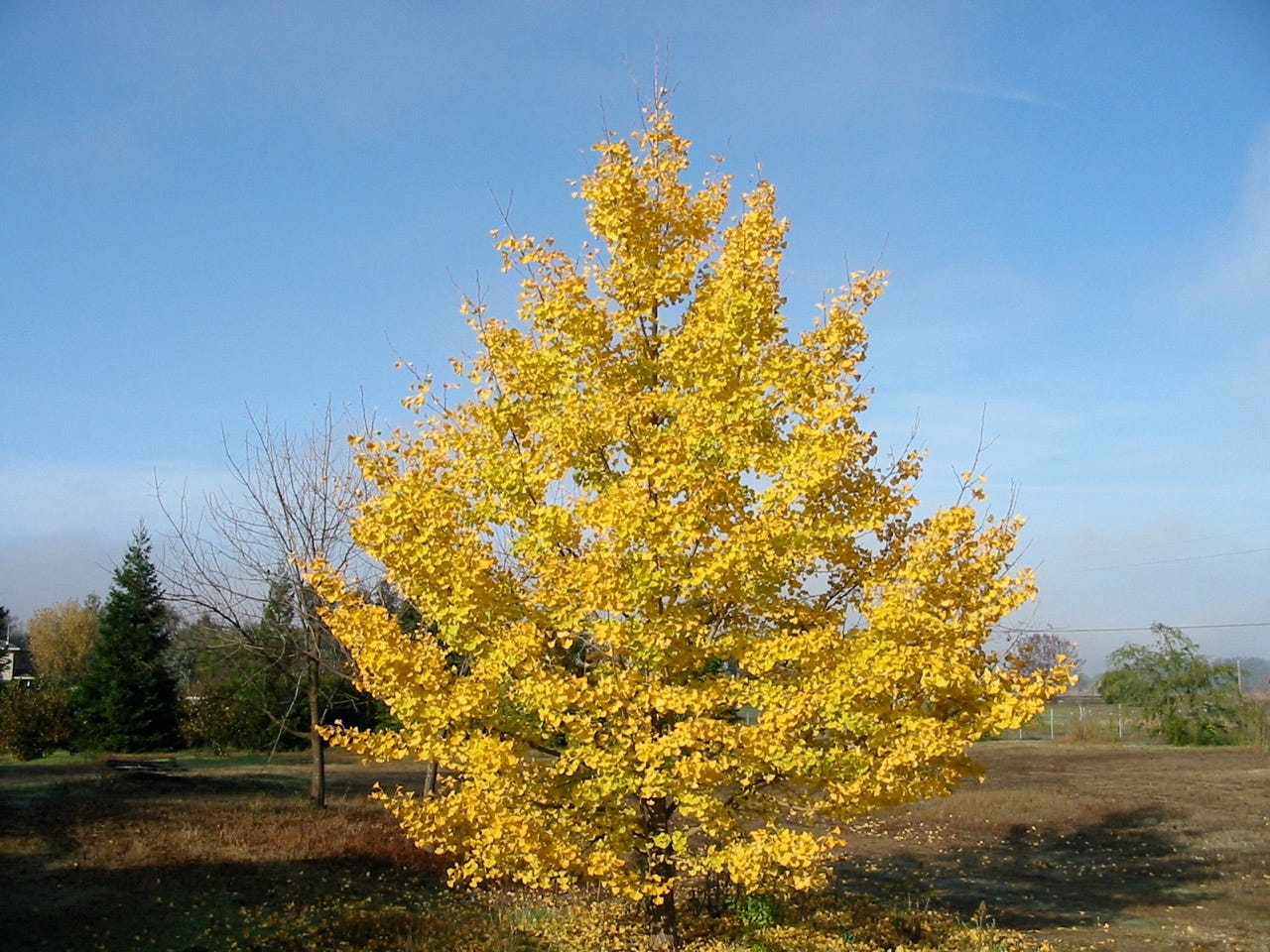BISSing Away the Day with Oxalis Weeds
The best time to pull weeds? Yesterday. But there's still hope. A deeper dive into Episode 153 of the Garden Basics podcast.
“Oh, Be A Fine Girl (or Guy). Kiss Me.”
Mnemonics, the practice of assigning a word or phrase to help you remember important facts is rampant among science students. For example, the phrase, “Oh Be A Fine Girl/Guy, Kiss Me” has been around in astronomy classes for decades in order to remember the spectral classification of stars, whose color that you see is a reflection of the amount of heat emanating from a particular celestial body due to its temperature. More correctly, it represents a classification based on the absorption of light by atoms in the star’s atmosphere. For example, O-Class stars are the the hottest, and appear, to us, blue in color. An example is the star, Mintaka, which is located in the belt of the constellation Orion. As the temperatures cool, next are the B-class, that appear only slightly blue. And on down the cooling line it goes: A-class, F-class, G-class (our sun is one of these, appearing white with a yellowish tinge), K-class and M-class, a star that appears red in color, such as Betelgeuse. However, with the development of more powerful telescopes, new classes were added as even cooler stars were discovered: L, T, and Y-class. So, the original mnemonic was expanded by one star-gazing wag to: “Oh Be A Fine Girl/Guy, Kiss Me, Less Tongue, Yo.”
(Note to astronomy students and teachers: more than likely, I screwed up the scientific explanation of this. Forgive me. Everything I know about astronomy came from an app on my phone.)
But, I digress (I told you there would be scenic bypasses!). My main point is that mnemonics exist in horticulture, as well. It’s what got me through Plant I.D. class in college. The only way I could keep straight the botanical names of the interior live oak (Quercus wislizeni) and the canyon live oak (Quercus chrysolepis), was that you had to LEAP across the canyon to see the canyon live oak.
On Episode 153 of the Garden Basics with Farmer Fred podcast, our favorite retired college horticulture professor, Debbie (“I love the way her brain works”) Flower gave us another mnemonic to remember when to pull weeds: BISS. “Before it sets seed.” And that mnemonic is a subset of another mnemonic she taught us back in Episode 150 while discussing field bindweed, with the setup that if you go to Hawaii, you’ll need to withdraw lots of money to enjoy the delicacies at a luau: POI ATM. BISS is a direct descendant of the “AT” portion of that mnemonic - the attack threshold - knowing when to take action against a pest, especially a weed. (By the way, in horticultural parlance, a “pest” can be a weed, insect, animal or disease. In other words, a living organism. Have I lost you yet?)
The weeds in question on Episode 153 were the leading vote-getters among pissed-off, I mean, BISSed-off gardeners responding to a “least favorite weed” survey at the Get Growing with Farmer Fred Facebook page: the clover-like, invasive members of the oxalis family, Creeping Woodsorrel and Bermuda Buttercup. Plus, a weed from a different genus but still resembles clover and may be the most despised of the group - Bur Clover.
What gets complicated about control strategies for these weeds: chemical solutions get confusing. Thus, cultural, physical and mechanical controls, as well as timing, may be a more effective answer. Listen to Episode 153 for the details on this. Briefly, the controls include pulling or hoeing it out early (remember BISS!). Cleaning any mowing equipment so that it isn’t transferred to another area of the yard, because it can hitchhike and reproduce easily by seed, branch, or bulb. And making sure that any plant you buy or bring home does not have this weedy enemy growing in plain site, in a container. For more about control tactics for this Holy Trinity of Weeds from Hell, click on the picture captions for excellent information from University of California Ag and Natural Resources.
And, as promised in the podcast, here are the tongue-twisting chemical control options that are very very specific.
See? They’re even hard to read, let alone understand! Click on those charts or the links beneath the pictures of the weeds for less strain on your eyeballs.
Things get even trickier when attempting to control these existing weeds in a turf area. Do you have a cool season or warm season lawn? It matters, especially when contemplating using herbicides to control existing weed populations. According to UCANR:
“Both established annual and perennial clovers (such as bur clover) can be controlled with postemergent herbicides. The best herbicide to use depends upon the species of turfgrass. Warm-season turfgrasses such as bermudagrass, zoysiagrass, and kikuyugrass will tolerate products containing mecoprop and dicamba but not triclopyr. Cool-season turfgrasses will tolerate all of the herbicides that control clover. The herbicide 2,4-D is not effective for clover control; it will injure the plant but does not control it.”
Know which weed you have. Know your turf type. Read and follow all label directions.
Those links in the weed picture captions will tell you a lot more, including organic strategies for keeping those weeds under control, such as soil solarization and cardboard mulching. And, of course, taking your aggressions out with a hoe.
Gin and KGO: A Clue for Spelling This Beautiful Tree’s Name.
Concluding on a brighter note: Warren Roberts, Superintendent Emeritus of the UC Davis Arboretum and Public Garden, has permanently emblazoned on my brain his mnemonic for remembering how to spell the name of this beautiful tree with outstanding fall color:
And, a look at the artistry of a Cal State Sacramento employee, Joanna Hedrick, who in 2018 was hard at work this time of year on the leaves of the Ginkgo trees on that campus:
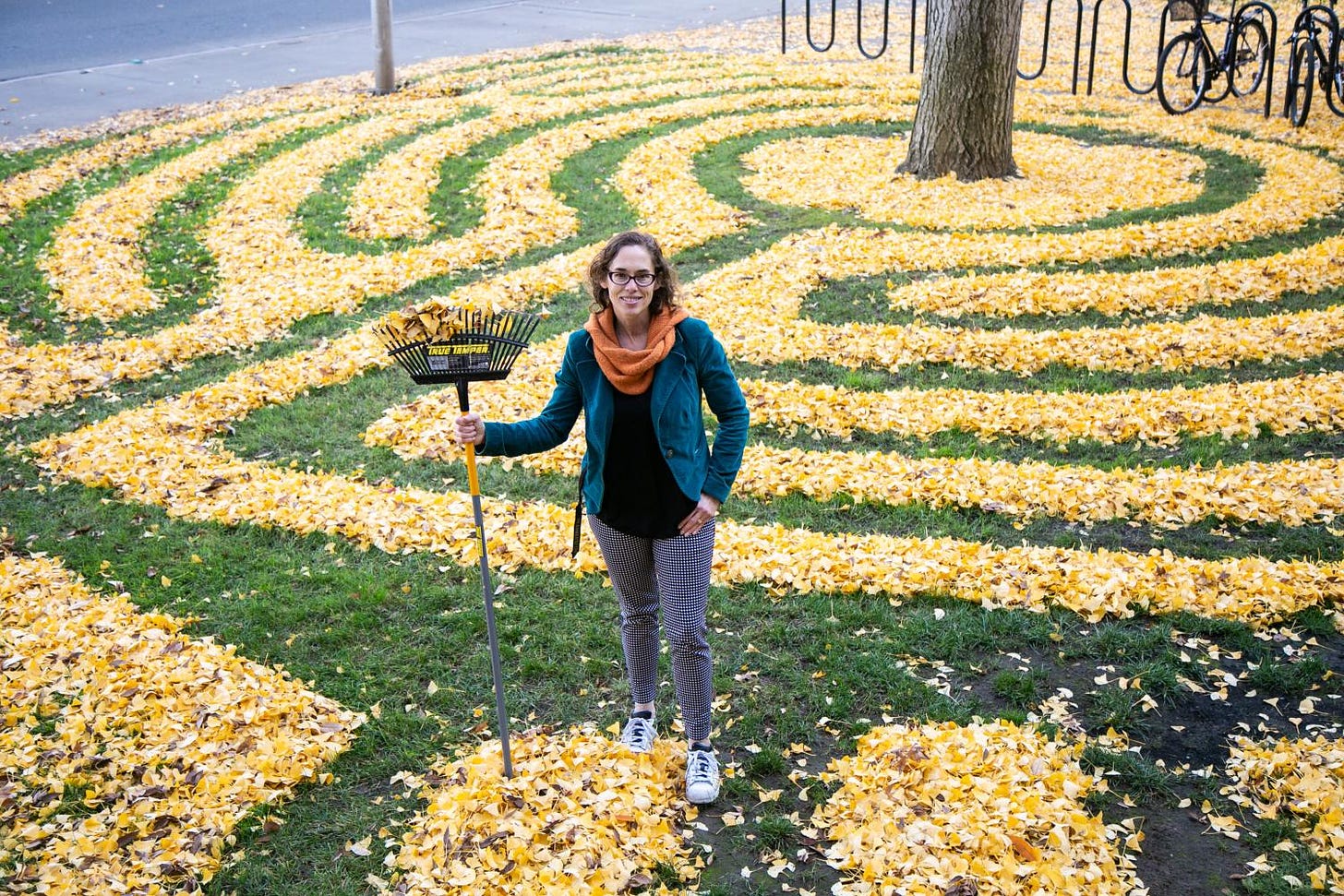
Thanks for Subscribing and Spreading the Word About the Garden Basics with Farmer Fred newsletter, I appreciate your support.
And thank you for listening to the Garden Basics with Farmer Fred podcast! It’s available wherever you get your podcasts. Please share it with your garden friends.
As an Amazon Associate, I earn from qualifying purchases from some of the underlined links in the newsletter. This is how I am trying to keep this a free newsletter. And as long as you buy whatever you want from Amazon using any of those links to get into the Amazon site, I get a few pennies. Thank you.




